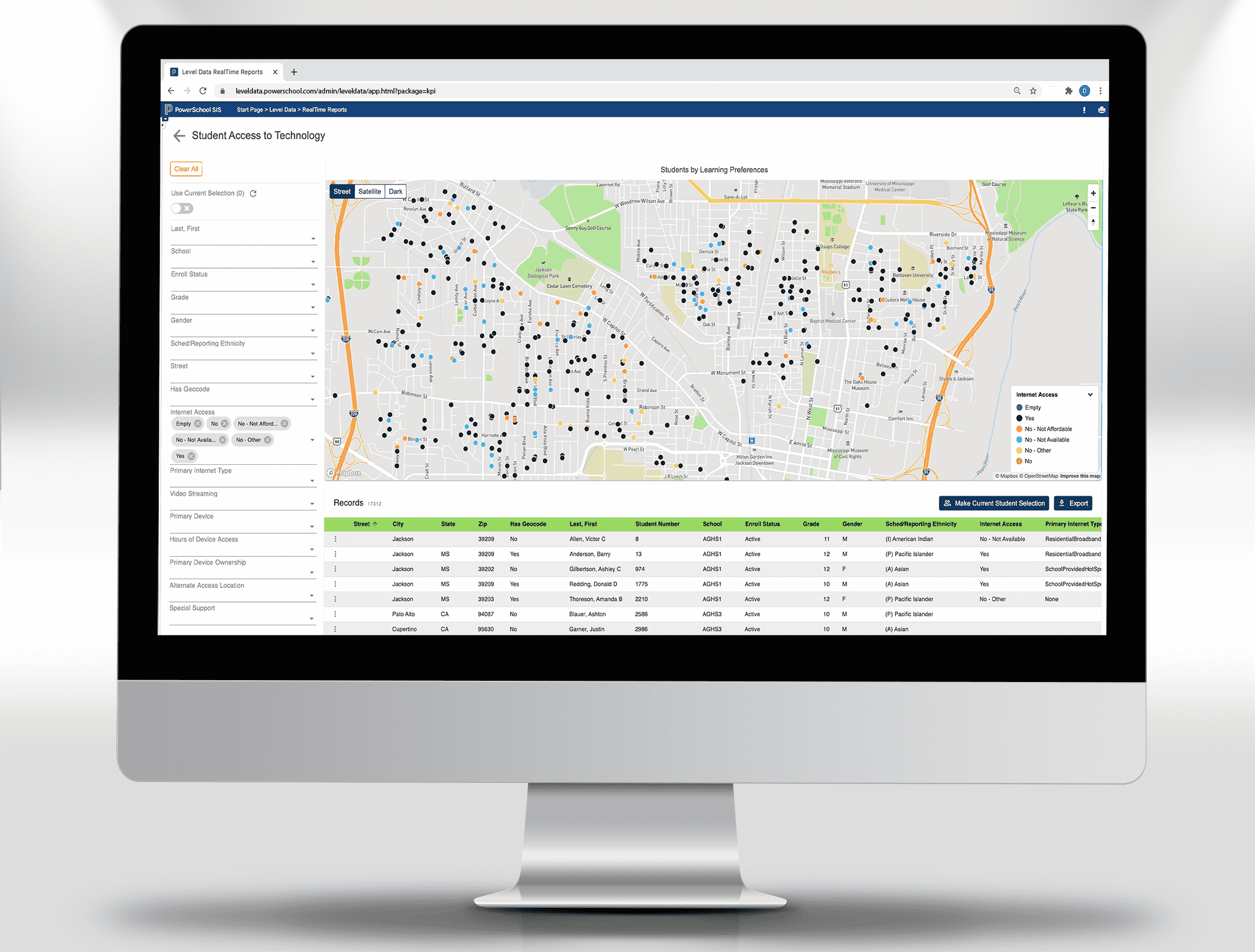Student headcount accuracy is the most critical factor effecting government-funded school district budgets; few would question that fact.
Yet what is often in question at school districts each year is if all enrolled students do or do not truly live within the boundaries of their district, or have some students been crossing over and getting a ‘free’ education or other specialized services.
If a question of residency is raised, school district staff must take burdensome time and spend limited resources to investigate the true residency of some students, oftentimes reviewing the local county tax rolls and other sources for confirmation.
The good news is now the answers can be found almost instantaneously right inside any district’s student data stored in their PowerSchool Student Information System.
School districts can now tap data reporting options from premiere PowerSchool vendor, Level Data, and utilize its RealTime Reports to build dozens of report capabilities – and automatically place student home locations on a map for all to clearly see.

For all school districts, knowing who their students are is important – but sometimes knowing where they live is much more important.
Where kids live can greatly affect their digital equity in our new world of on-line education.
Whether it is economics caused or a geographic cause, being able to see student homes plotted on a map – compared to a line-item list – greatly increases full understanding of what needs to be done to address such inequity problems.
Dozens of Mapping Advantages
Level Data’s RealTime Reports mapping capacities can in five minutes or less show trends in topics like these below:
- Health and Wellness (Contact Tracing and more)
- Incident Reports
- Movement of students
- Where team sports or activities members live
- Passing and failing students
- Locations of school-loaned devices
- Best and worst locations for Internet connectivity
For a Level Data customer in Georgia, quickly and easily mapping their students’ homes that are up against the outer edges of their expansive county-wide borders became a game changer for accuracy, plus time and resource savings. Running such reports can be completed in five minutes.
"RealTime Reports helps us with situations with people right on the border line of the district. We can easily see if they are in Pike County or just over that line,” said Priscilla Willis, Student Information Coordinator for Pike County Schools.
Pike County Schools do not offer school of choice. “So, it helps us catch the people trying to get in our district but don’t truly live in our district,” Willis said, adding that it’s less about providing a free education and more about facility use planning.
"RealTime Reports helps us with situations with people right on the border line of the district. We can easily see if they are in Pike County or just over that line.”
“Things like that boil down to our facilities; do we have enough room?” Willis said. “If we let people outside come in, we have to look at building more schools, and it can snowball if we let them attend.
“We have to police that all the time. People do it and then our Pupil Services Director has to investigate, so it saves us a lot of time and money if we know in the beginning this student (home address) is really a question mark before we enroll them.
“It’s just another tool for us to see if there is a red flag from the beginning,” she continued. “We can pinpoint it on that (Level Data) map and see if we need to ask more questions or we need to do additional research in our tax assessors files – to make sure that address is our address.”
The new mapping feature in RealTime Reports has been lauded as a huge time saver while also increasing accuracy in creating reports for School Boards, district administrators, and staff.
Feedback from districts has indicated that the same activity can take a month to do by hand.




